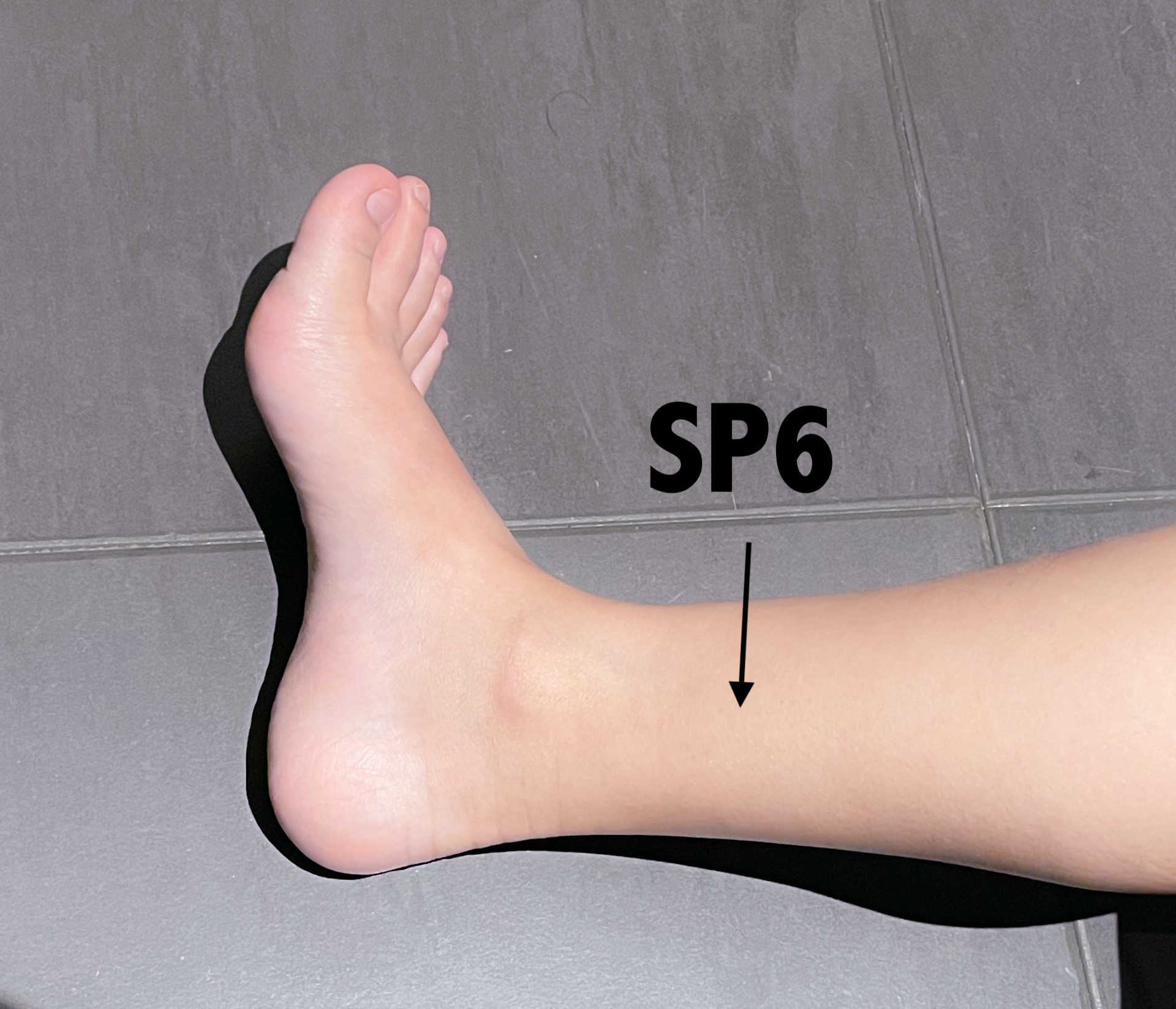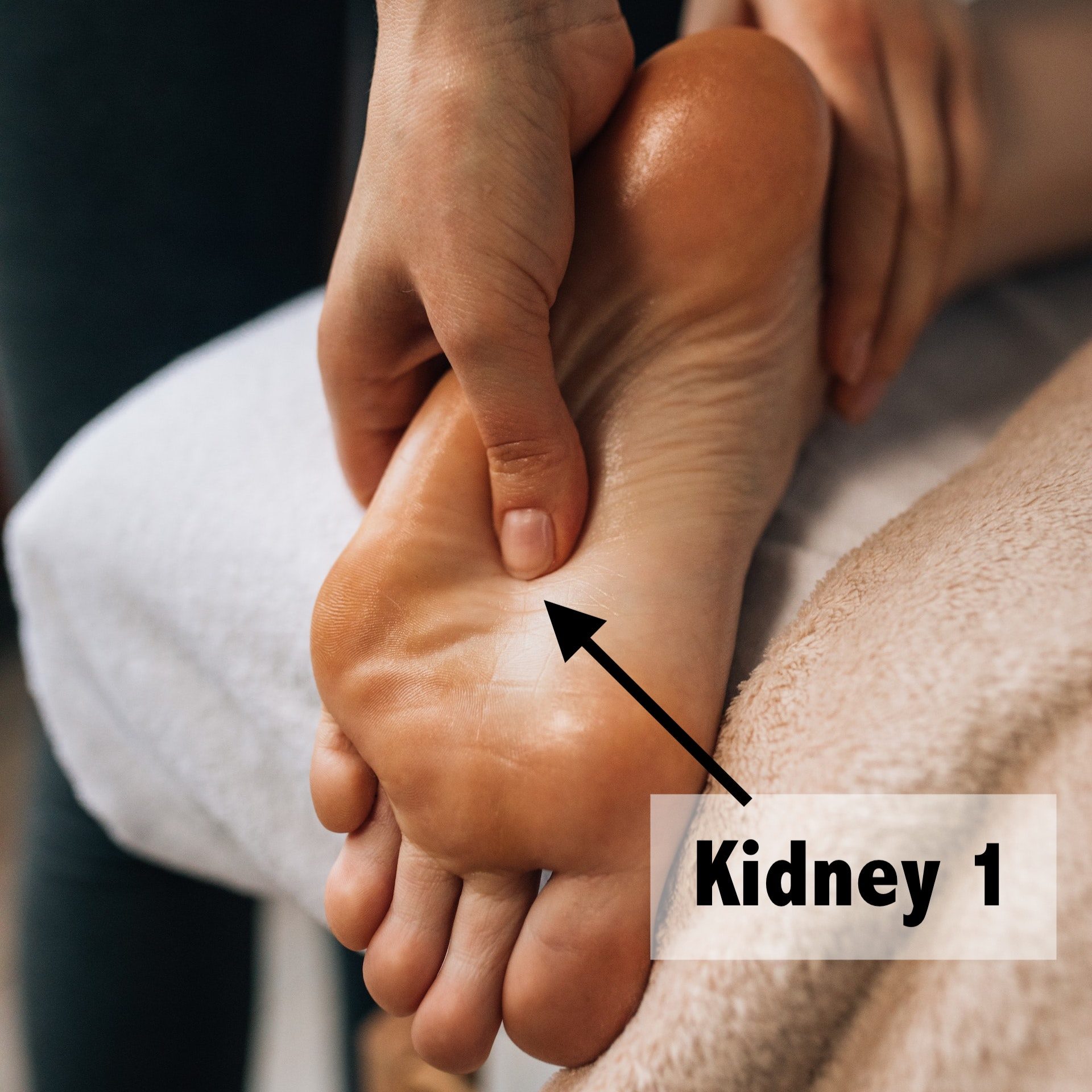3 Simple Self-Stretching for Chronic Lower Back Pain
I’d like to share some simple self-stretching techniques for chronic lower back pain, one of the most common and frustrating issues affecting people of all ages, from...

August 10, 2024
Hi, it’s Satoru here from hariQ acupuncture & herbs. In this blog post, I want to teach you about how important to keep your feet warm for your low back pain, which most of your doctors or neurologists are not going to teach you, and 6 easy tips to warm your feet to help your low back pain.
From the Traditional Chinese medicine perspective, there is a correlation between low back pain and cold feet. It’s called cold sensitivity, and in traditional Chinese medicine, that is one of the most important signs that practitioners always check when you have chronic low back pain.
We understand this can be a lot of information and overwhelming: if you are looking for more support and answers, set up a free consultation with our Sciatica Specialist, Satoru Ozawa. Share your story, get your questions answered, and learn how you can set yourself up for tremendous success in achieving a healthy life.
Cold sensitivity happens when you have poor circulation down to the capillary blood, the small tiny blood vessels in the tips of hands and feet. No matter what the environment, even in the summertime, if you get cold hands and feet, you have this condition.
Daily lifestyle is significantly involved in poor circulation. Let’s take a look at the leading causes.
If you don’t exercise, your body’s metabolism slows down, and it causes poor blood circulation. Also, muscle mass is critical because you won’t create heat and warm your body well.
In particular, women have less muscle mass than men, so it is more difficult to generate heat and tend to be sensitive to cold. Because women have periods every month, the uterus and ovaries block blood flow and lose blood, resulting in poor blood flow that can’t reach the extremities.
Wearing light clothing, such as skirts in cold weather, makes your hands and feet freeze. Also, Tight clothing cuts disturb blood circulation.
Older people feel cold because they cannot generate heat due to aging. Their muscle mass and organ function are lower; for example, frequent urination and stiff shoulder and back pain should be released by warming your body.
Eating too many cold foods, sweets, fast foods, and snacks causes your body to get cold.
And lack of minerals and vitamins with unreasonable dietary restrictions can cause your blood to become muddy and have poor circulation.
Excessive stress causes insufficient blood flow and causes poor circulation. In addition, if stress and pressure ruin you for a long time, the autonomic nerves get imbalanced and lose control of your body temperature.
The Autonomic nerves play a significant role in controlling body temperature. When you are hot, it expands the blood vessels to let the body temperature down; when you are cold, it shrinks the blood vessels so that the body temperature remains the same.
However, nowadays, people live in an environment with AC, and our “hot” and “cold” sensor becomes dull and does not work well. It constricts the capillaries and causes cold sensitivity.
Smoking rapidly constricts blood vessels and reduces blood flow, leading to coldness.
The digestive problems also lead to lower blood flow and coldness.
People with thyroid hormone imbalance like hypothyroidism or Hashimoto’s disease tend to get cold hands and feet. Also, When you have menopause, your women’s hormones are lowered, and you lose control of your body temperature. You get cold feet even though you have hot flashes (Heat Sign).
Women tend to get deficient in iron. They lose blood from menstruation, so they must take more iron than necessary. If this condition persists, it will eventually lead to anemia.
Anemia is a condition with few red blood cells in the blood. The red blood cells carry oxygen, resulting in fatigue, dizziness, and cold feet.
Traditional Chinese medicine is pattern medicine. We don’t look at only one symptom, but we look at the person’s constitution as one. Please look at these three Chinese medicine diagnoses. All three diagnoses include low back pain and cold hands and feet together. If you have cold feet, your prognosis is not good. Warm up your feet is the first step to improving your low back pain.
In Traditional Chinese Medicine, the liver is the organ that regulates Qi (energy) and stores blood. It is easily affected by stress. Once Liver energy gets stuck, it disharmonizes blood circulation causing cold hands and feet. It is also associated with low back pain, irritability, depression, abdominal distention, constipation, etc.
The body’s metabolism also goes down when your body temperature goes down. It creates stasis of the blood and poor circulation. Blood stasis signs are low back pain, heart palpitation, nerve pain, dizziness, red faces, dark circles under the eyes, purple lips, etc.
The spleen creates post-natal energy, and Kidney Yang energy facilitates the function of the spleen. Yang is like fire; if there is no fire, symptoms include cold hands and feet, lower back pain, fatigue, frequent urination, etc.
Now, how to improve poor circulation to improve cold sensitivity?
Incorporate them into your daily life to improve your sensitivity to cold.

Soaking your body in the bath instead of taking a shower is one of the best ways to improve your sensitivity to cold. In America, most people only shower, but I recommend a hot bath every night. In Japan, the research compared 38 people who only took a shower and bath for two weeks. After the study, there were significantly better results for the group who took a bath, lowering their stress, pain, and fatigue, than the group who only took a shower. Taking a bath increases blood flow and supplies oxygen and nutrients to the limbs.
Let’s take a bath in about 100 °F of water. It’s a good idea to soak in hot water for a little longer until you sweat slowly.
The parasympathetic nerves work to widen blood vessels and improve blood circulation. Let’s relax and warm from the core of your body.
To improve blood flow is to promote metabolism. Exercise is the most effective way to boost metabolism, and it doesn’t have to be complicated. Light walking is fine.
In your daily life, it’s enough to walk a little more or do a simple stretch. In particular, stretching before bedtime improves blood circulation, increases body temperature, and helps you sleep well.
Try moving your body a little more in your daily life.
Some foods warm the body and cool the body. Try to eat more warm foods to improve blood circulation and coldness.
Foods that warm you: Root vegetables such as ginger, green onions, garlic, and burdock make you warm. These vegetables grow in cold regions. And black foods like sesame, black beans, and azuki beans also warm you up. Warm drinks: black tea, roasted green tea, oolong tea, cocoa, ginger tea
Foods that cool you down: Vegetables from hot areas, such as tomatoes and cucumbers, are cool vegetables. Sugar and artificial sweeteners, butter, margarine, snacks, and chocolate also cool you down. Drinks to cool your body: coffee, green tea, juice, water, milk
Fingernail massage: Massage at the corner of the fingernail improves blood circulation throughout the body, reduces stiff shoulders, relieves tiredness and tiredness, and raises body temperature.

These acupuncture points, called Jing Well points, effectively improve immune systems and increase body temperature.
There are acupuncture points to increase the body temperature and help with cold sensitivity. Let’s press and hold 30 seconds daily to promote more circulation.
Location: Located 3-4 fingers above the malleolus of the inner ankle.
Efficacy: One of the acupuncture points that work well for women, such as poor circulation and irregular menstruation, is especially important for poor circulation.

Location: Slightly closer to the foot’s arch, in the dent created when the finger is bent.
Efficacy: This Acupuncture point is effective against poor circulation, such as blood and essence, cold feet, and swelling.

Location: In front of the first and second toes. The point is where the big toe and 2nd toe bones meet.
Efficacy: This acupuncture point improves coldness from blood flow. In addition, it belongs to the flow of energy called the liver meridian, which is closely related to the parts of the body that we are overworking, such as the liver, muscles, eyes, physical fatigue, psychological stress, and eyes.
This formula is a major tonic for people who have a cold stomach. The primary ingredient is Yi Tang, which is sweet and excellent for reconstructing the middle burner. So, people with fatigue, cold feet, low appetite, cold stomach, low immune system, etc., are suitable for this formula.
This classic formula is used to supplement Kidney Yang. Kidney Yang is the source of energy for creating heat in the body. Once you have depleted Kidney Yang, you have cold symptoms such as a cold lower back with pain, cold feet, fatigue, frequent urination at night, etc.
We'll be happy to answer your questions.
Yes. Acupuncture is very effective for Low Back pain. We examined your low back and muscle tightness during the initial acupuncture session. You may be unable to bend forward or lean back due to pain. The treatments focused on reducing inflammation and swelling and restoring movement in the low back. Acupuncture has been shown in many studies to be incredibly practical in reducing pain and inflammation due to its ability to stimulate the body to release its natural painkillers. So, you start feeling relieved from the pain after each session.
As a general rule of thumb, the sooner one receives treatment, the better the prognosis.
Some patients come for low back pain treatment months or even years after the initial onset, and these chronic cases are often more complex and take a much longer time to achieve results. Even then, recovery is not guaranteed.
Regarding the frequency of treatments, Acupuncture follows a simple rule. Acute and relatively new conditions are most effectively treated with more frequent visits, whereas chronic and old conditions can benefit from more widespread treatments. In other words, if you just had an onset of low back pain, you will probably be prescribed 2-3 treatments per week in order to get the most effective results, and chronic cases will generally come in only once a week.
If you or a loved one was diagnosed with a low back pain and want to learn more about Acupuncture and whether it’s appropriate for your case, send us a message through our contact page. Thank you for taking the time to read this blog post! I appreciate your interest and hope to see you again for future posts.
We understand this can be a lot of information and overwhelming: if you are looking for more support and answers, set up a free consultation with our Pain Specialist, Satoru Ozawa. Share your story, get your questions answered, and learn how you can set yourself up for tremendous success in achieving a healthy life.
The following blogs discuss natural remedies, acupuncture, Chinese medicine, Chinese herbs, and tips for maintaining good health.
I’d like to share some simple self-stretching techniques for chronic lower back pain, one of the most common and frustrating issues affecting people of all ages, from...
I would like to share with you what you can do with 5 TIPS and how to manage one of the most annoying conditions: tinnitus or ringing...
A 45-year-old man came to my clinic looking for some relief from the ringing in ears because he discovered that acupuncture might be a great option to...

Satoru Ozawa, L.Ac, ATC
hariQ acupuncture & herbs
Licensed acupuncturist, Certified Athletic Trainer and Chinese herbal specialist. With his 10 years of experience in Oriental Medicine, he will recommend the best natural Remedies, including Acupuncture, Chinese herbs, and health tips to relieve your suffering.
2 comments